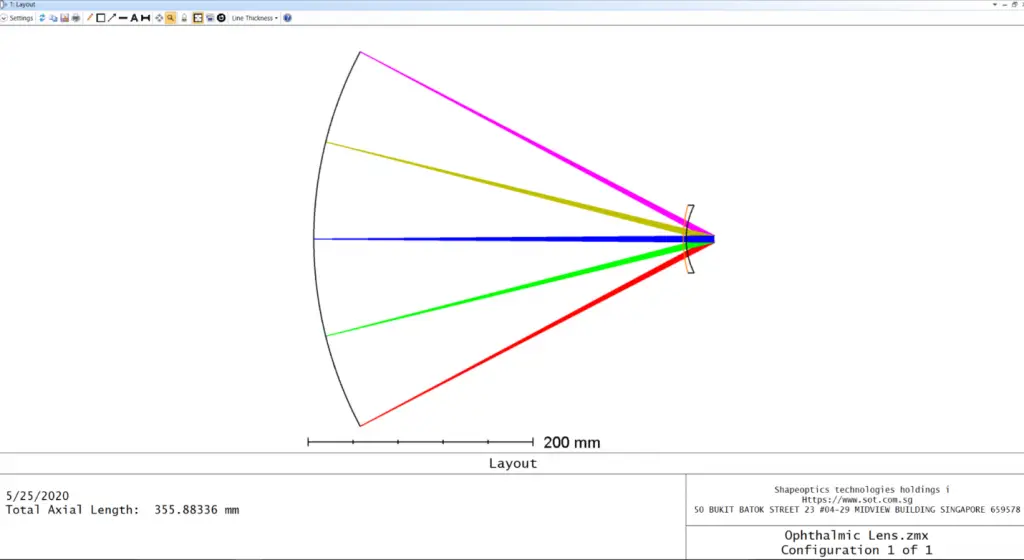This article describes the principles of ophthalmic lens design, and discusses the parameters of the lens.
With spectacle lenses, the prismatic effects associated with the lens peripheries result, when the eyes are stationary, in an annular zone of the visual field being invisible (a ring scotoma) with a positive correction, and being seen diplopically with a negative correction.
A myopic eye has a “far point” at a distance in front of the eye that corresponds to the furthest point that can be seen clearly, since more distant points will be imaged in front of the retina. As the eye rotates, the far point remains at a constant distance from the eye and falls on the “far point sphere”. The far point is the optical conjugate of the retina, so the function of an ophthalmic lens is to form an image on the far point sphere. The aperture is the pupil of the eye, and since the eye rotates the aperture is referred to the eye’s centre of rotation. The object plane is normally taken to be at infinity, although a near object plane can result in a substantially different lens design.

References
- Corning. 2019. Glass Products Data Sheets. Accessed Feb 15, 2015. www.corning.com/worldwide/en/products/advanced-optics/product-materials/specialty-glass-and-glass-ceramics/ophthalmic-glass/glass-products-data-sheets.html.
- Sultanova K., Karasova S., Nikolov I., (2009), Dispersion Properties of Optical Polymers, Acta Physica Polonica A, 116:4, 585-587.

